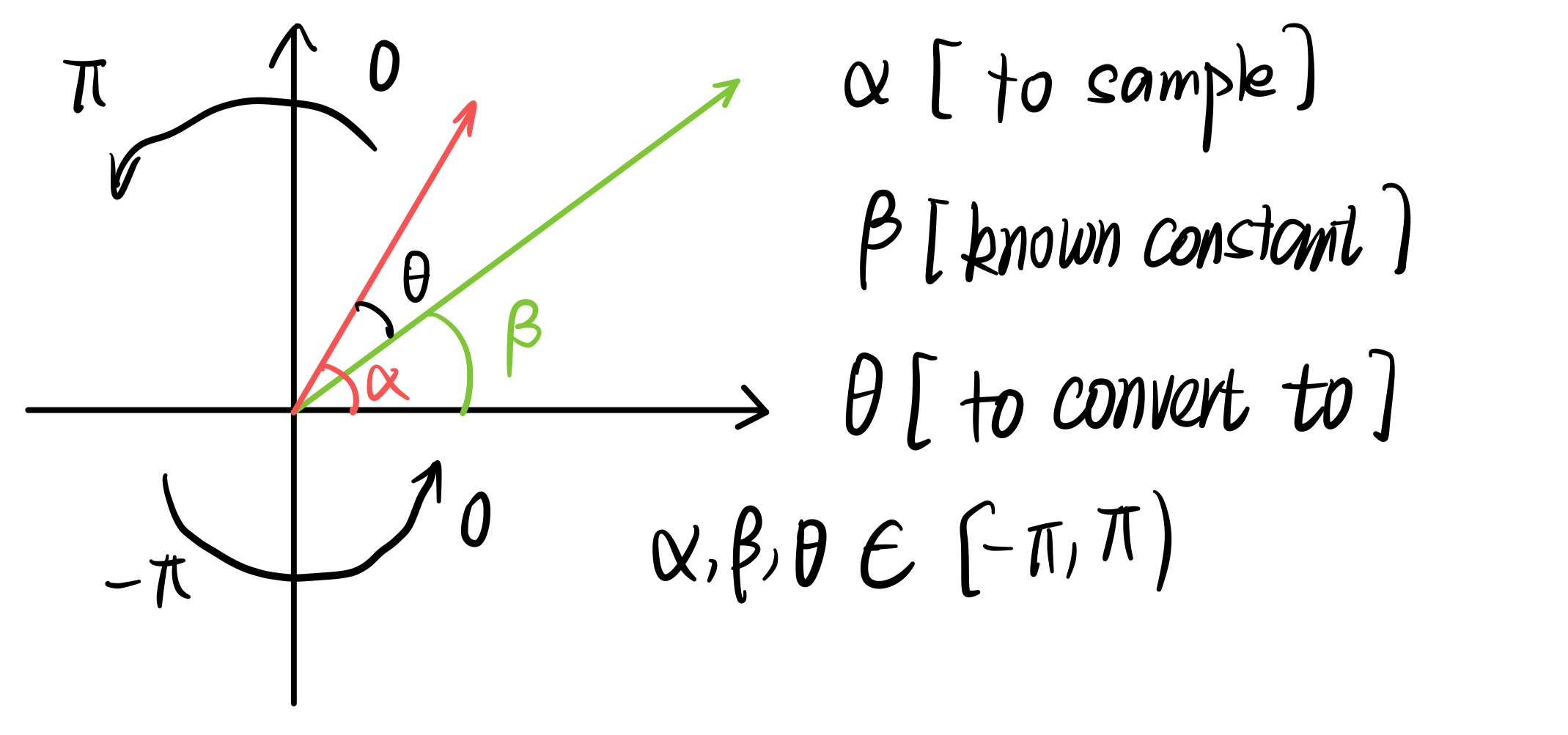I think I got the answer via extensive numerical simulation. The result of the simulation is not listed here, so if you need it then you can comment to let me know.
Ok, I think I've derived the mathematical form of this conversion, but whether the conversion is needed still remains unknown and I will leave it behind for now since I am contacting someone with this kind of area expertise to help, and the answer will be updated if I get a reasonable answer. But I do need some reassurance for the correctness of this derivation and I'd appreciate any help.
Ok so first we re-formulate the problem setup, as shown in the following figure:

So we will always have $\theta = \alpha - \beta$ and note that $\alpha$ (its cosine term) is the value to sample for the new approach, $\theta$ is the angle for original phase function sampling and $\beta$ is a known constant (given the ray direction before sampling and the position of current vertex and target vertex). So:
$$
\frac{dP}{d\cos\theta} =\underbrace{\frac{dP}{d\cos\alpha}}_{\text{known, should be converted}} \times |\frac{d\cos\alpha}{d\cos\theta}| = \frac{dP}{d\cos\alpha} |\frac{d\cos\alpha}{d\alpha}\left(\frac{d\cos(\alpha - \beta)}{d\alpha}\right)^{-1}|\\
=\frac{dP}{d\cos\alpha} |\frac{\sin \alpha}{\sin(\alpha - \beta)}|
$$
The term:
$$
|\frac{\sin \alpha}{\sin(\alpha - \beta)}|
$$
should be able to do this conversion (if needed). Note that this is just a Jacobian conversion.
My point is, to apply MIS, we can't directly use PDF for sampling $\theta$ (cosine) and the PDF for sampling $\alpha$. The meaning of these two terms just doesn't match. We should convert both of them to the same meaning, like we are both talking about sampling $\alpha$ or $\theta$. I have done some numerical experiments, comparing hisogram of the cosine value with the analytical Jacobian I derived and I think the results match with each other.
So, this question now becomes:
- Whether my derivation is correct?
- The answer is yes. I did a numerical simulation, compared the histogram and the analytical curve and found they are matched.
- Whether this conversion is needed for MIS? Or even, since Monte Carlo estimator is of form $f(x) / p(x)$, should I multiply the PDF in the denominator by this Jacobian?
- I think the answer is no, it is not needed. A numerical simulation again showed that when I add this conversion, the result will not be correct (won't match).

